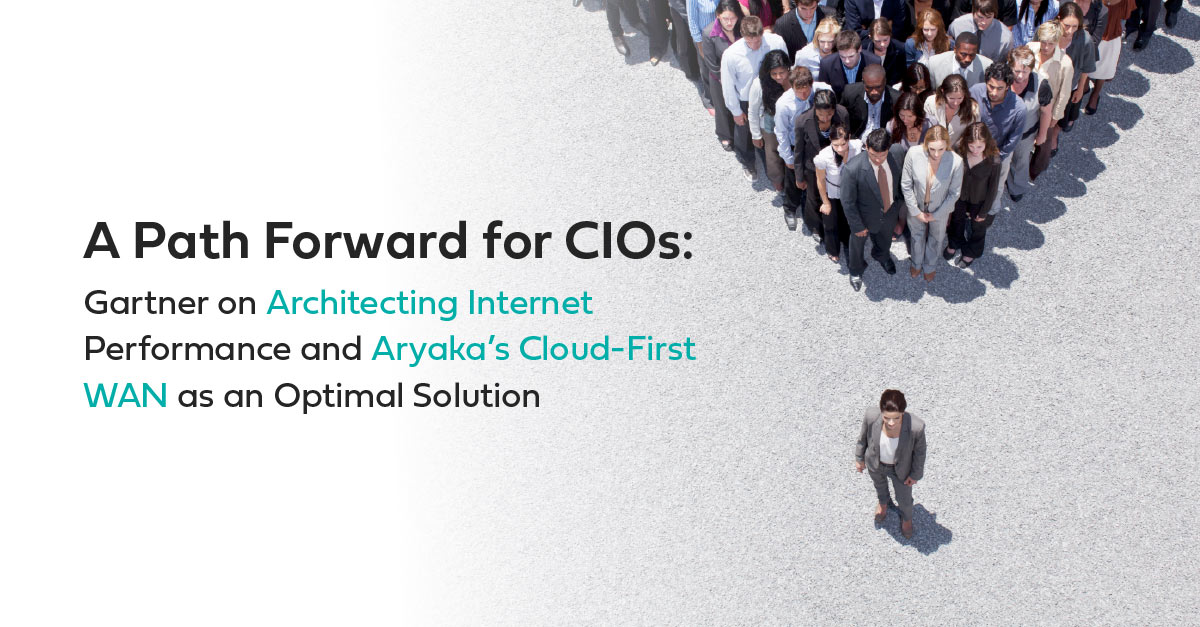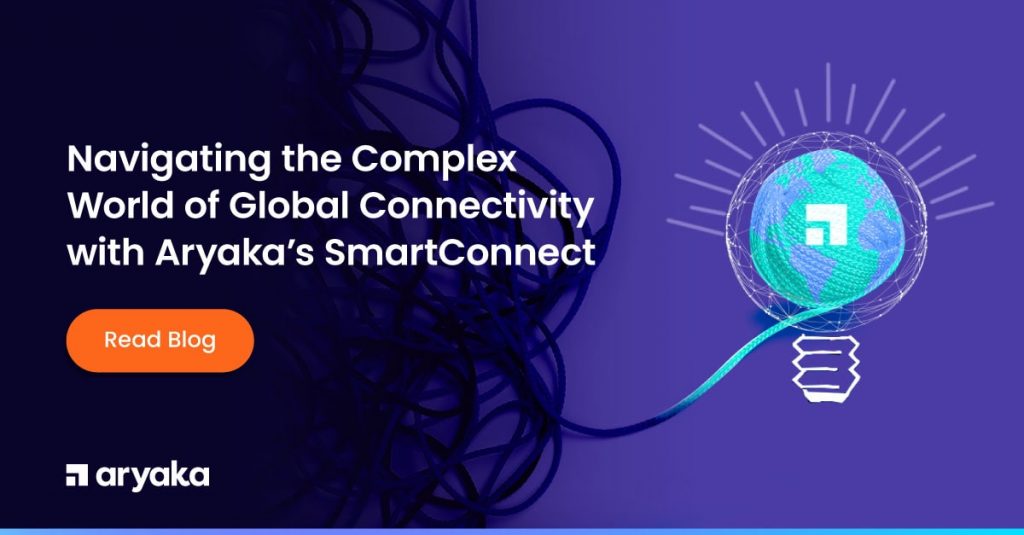A Path Forward for CIOs: Gartner on Architecting Internet Performance and Aryaka’s Cloud-First WAN as an Optimal Solution

Recently, Gartner published a foundational document on optimizing internet performance (How to Architect Your Network to Optimize Internet Performance and Reliability, Published 29 December 2020 – ID G00731192). Many of you may have access to this. Why I say foundational is that it ties together many of the themes that are top-of-mind for CIOs and network planners, and that at Aryaka we totally embrace.
One of the trends in WAN evolution is the ability to leverage a hybrid environment, combining multiple technologies. In our case, Aryaka customers leverage our private core – more on that in a bit – as well as MPLS and broadband internet aka DIA. It is this latter option where enterprises sometimes run into problems, not fully understanding application performance implications of a non-SLA driven link, globally or even regionally. Gartner makes a bold statement: “Using the internet for network connectivity can lower cost and improve application
performance by reducing latency, despite its lack of predictability and centralized support.” So how does this work given lack of SLAs and where enterprises “become responsible for assuring reliability and performance”? The document poses the question: “How can I use the internet to carry my application traffic, while ensuring consistent performance, visibility, and reliability?” There are multiple parts to the answer, including what actions can be taken across the first, middle, and last-mile.
Looking first at the middle-mile, in order to ensure end-to-end application performance, there must first be performance guarantees across this segment. The document states: “Vendors such as Anapaya, Cato Networks, Tata Communications and Teridion offer an enhanced internet service based on an OTT internet overlay. Vendors such as Apcela, Aryaka and Mode (now part of VMware) base their deployment on a private middle mile.” There is a critical difference in approaches here, since an OTT internet overlay suffers the issues identified above – lack of predictability and centralized support. The Aryaka private core, leveraging dedicated resources, suffers none of these limitations. You have an issue, you call Aryaka support as part of a fully-managed service. As Gartner states, the ‘internet’ doesn’t have a support line! For completeness, Aryaka does offer DIA-only connectivity for customers between sites, both globally and regionally, but this too is offered as part of a managed and fully supported service.
The first-mile, cloud connectivity, is where DIA-only options also present problems. A basic internet service won’t include managed multi-cloud access, so enterprises must provision connectivity to any and all IaaS/PaaS/SaaS providers they leverage, a path that adds additional complexity and cost. To effectively manage this and the various cloud services consumed, they must be domain experts for every platform and application. Sure, they can leverage one of the cloud interconnection providers, but this is an additional piece of a complex puzzle they must manage and budget.
For the last-mile, enterprises have deep experience with ISP management, sometimes in conjunction with an aggregator. Remember that the SD-WAN model in general calls for multiple access technologies including business internet, ‘residential’ internet, MPLS, and cellular. Each of these options comes with advantages and disadvantages, and a multi-national, dealing with different ISPs, may not have the in-house expertise to manage this complexity. And, they may not have access to the optimization technologies that will deliver the required performance and resiliency expected. The solution here, as Gartner points out, is to “prefer offerings that are
bundled with an SD-WAN solution, such as Teridion, Cisco-Meraki or the all-inclusive Aryaka.” Given that both Teridion and Cisco-Meraki are OTT, Aryaka is the only provider to offer SLAs across both the last and middle-mile.
Last but not least, visibility is identified as key to success. Remember, you can’t manage what you can’t measure. A DIY internet deployment, or even one front-ended by a telco or MSP, still requires end-to-end visibility in order to ensure reliability and performance. It goes without saying that a fully managed service, offering a single point of visibility and control for all WAN connectivity options, delivers a competitive advantage and in fact mitigates some of the potential cost and management pitfalls identified.
To summarize, the Aryaka architecture provides a path to ensuring internet success:
- Our middle-mile offers performance guarantees and a single route to support
- Our first-mile optimizes multi-cloud connectivity, removing complexity and minimizing cost
- Our last-mile ensures edge performance and resiliency, also hiding complexity from IT
- Our end-to-end visibility capabilities tie this all together, permitting IT to monitor and verify end-to-end performance SLAs
By following the suggestions above, further detailed in the actual report, enterprises can ensure that their hybrid WAN deployments that include the internet will deliver on productivity, flexibility, and TCO expectations.
- Calypso improved Microsoft SharePoint and Exchange performance by up to 13x
- Bajaj Electricals Enhances VoIP and Web-Conferencing Application Performance
- ThoughtWorks Chooses Aryaka SmartConnect for Faster Application Performance
- Xactly Replaces MPLS, Achieves 6x Faster RDP Performance
- Schenck Process Deploys Unified, Global Network and Solves Global Application Performance Issues
- NVIDIA Experiences 80% Faster Application Performance
- Global Retailer Displaces MPLS to Achieve 20X Faster App Performance
- Enterprise Professional Services company Improves App Performance
- Here’s What No One Tells You About Application Performance
- SD-WAN Solutions for Office 365 Application Performance
- How Latency, Packet Loss, and Distance Kill Application Performance
- How SD-WAN Can Improve Office 365 Application Performance 20x
- SD-WAN Solutions for Office 365 Application Performance
- How to Improve Application Performance for the Remote and Mobile Workforce
- How SD-WAN Can Improve Application Performance for Global Enterprises
- Are SaaS Cloud Applications Slowing You Down?










